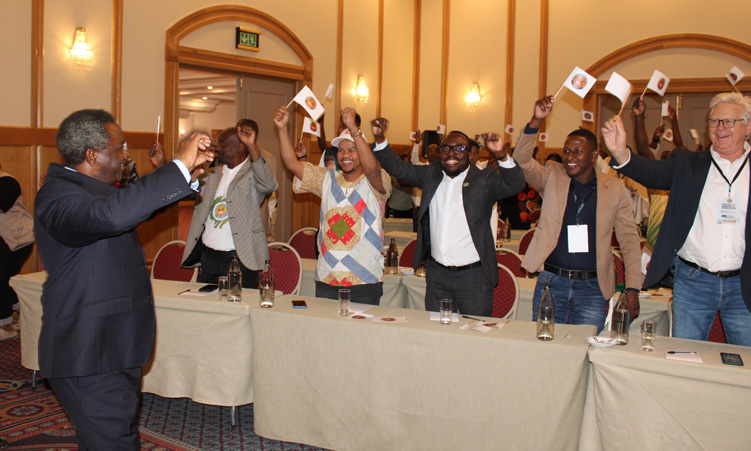NEW DELHI – When Tata Steel bought an Anglo-Dutch competitor this year for US$12 billion, the newspaper headline ‘Empire Strikes Back’ symbolised how far India’s economy had come in the 60 years since independence.
The aggressive foreign grab by a private Indian firm was a far cry from the image of a simple village handloom used by Mahatma Gandhi in India’s fight against British imperialism and his campaign for economic self-sufficiency, or ‘Swadeshi’. Then, Indians felt self-rule was about economic survival as British competition sucked the life out of local industries.Life expectancy was around 30 years, famine an ever-present threat.Now, India’s capitalist kingpins are on a global buying spree, from snapping up Scottish whisky distillers to eyeing the purchase from Ford of the luxury Jaguar car brand.Westerners fret about losing their jobs to India’s cheap, educated professionals.”These 60 years have been a trying period,” said TK Bhaumik, chief economist at Reliance Industries Ltd, India’s most valuable company.”We have faced several calamities but we have created a middle class, a new entrepreneurial class and now young Indians are managing global firms.”But, despite the successes, the shadow of independence – whether bucolic Swadeshi or the later Soviet-inspired socialist protectionism of India’s first prime minister, Jawaharlal Nehru – still hovers over “shining” India.India’s policy-makers, many born before 1947 and imbued with the ideals of the founding fathers, have been cautious about opening up the economy further, slow to build on market reforms that began in 1991.For critics, they are still too often distrustful of foreign investment and continue to feed off a corrupt government apparatus that twisted the ideals of Nehru’s state socialism and threatens modernising reforms.”Here, it is fashionable to be anti-reform,” said Surjit Bhalla, head of Oxus Research and Investments.India’s fragile coalitions, often backed by powerful regional and caste-based parties, are often unable to push through big-bang reforms for fear of losing mass support.YOU CAN’T SELL THAT HERE For sure, foreign investors face challenges.Take two global giants, the US retailer Wal-Mart and British-based telecoms player Vodafone.India’s US$350 billion retail sector is dominated by small neighbourhood stores, and the ruling Congress party, which heads a fractious centre-left coalition, is grappling with how to ease the entry of corporates without throwing millions out of work.Wal-Mart, which has signed a wholesale deal with India’s Bharti Enterprises, has been caught in the middle and has faced street protests.Vodafone Chief Executive Arun Sarin said this year his hopes that India’s bureaucracy had changed were shaken by moves to derail his company’s $11 billion take-over of telecoms firm Hutchison Essar.”The billionaire losers’ club was trying to unwind the deal,” he said.”What I didn’t count on was that the bureaucracy would kick in with this kind of evil spirit from our competitors who had lost.”Sarin later said his remarks were aimed at “vested interests” who had tried to scupper the deal.There is no doubting the successes of independence.According to one estimate, India has pulled a population equivalent to that of Western Europe out of poverty since 1947.It now exports food, doctors and vaccines to the West.Decades of ‘Hindu rates’ of low single-digit growth have given way to record economic expansion.India’s 50 million-strong middle class could expand tenfold by 2025, consultancy firm McKinsey says.”There were two spurts of reforms – one from 1991-1993 and another from 1998 to 2004,” said Arun Shourie, a former minister in a coalition led by Hindu nationalists, which was voted out in 2004 after running a stridently pro-reform campaign.”These two reform periods created enough elbow room for the private enterprises and middle-class to grow,” Shourie, a former World Bank economist and newspaper editor, said.NO TIME TO LOSE But if India is to truly free itself from the past, then it has to put its people first: education and health care in South Asia rank only above those of sub-Saharan Africa, a report by the Asian Development Bank said.There are growing income gaps, especially between urban elites and the two-thirds of Indians who live in villages.”This is an issue about which we started talking even before we acquired our independence,” said former 1990s finance minister Yashwant Sinha.”India is growing at nine per cent, 10 per cent.On the other hand these basic necessities of life are not being adequately delivered and the old debate between growth and development has become very real.”For many, the government has a Jekyll and Hyde character, capable of firing rockets into space but incapable when bureaucrats halt social projects because they disagree on what colour pen – red or green – must be used to sign memos.That needs to change fast.”You in the West have had the luxury of time and started off hundreds of years before us,” said Sheila Dikshit, chief minister of New Delhi.”We haven’t got the luxury of time.”Nampa-ReutersThen, Indians felt self-rule was about economic survival as British competition sucked the life out of local industries.Life expectancy was around 30 years, famine an ever-present threat.Now, India’s capitalist kingpins are on a global buying spree, from snapping up Scottish whisky distillers to eyeing the purchase from Ford of the luxury Jaguar car brand.Westerners fret about losing their jobs to India’s cheap, educated professionals.”These 60 years have been a trying period,” said TK Bhaumik, chief economist at Reliance Industries Ltd, India’s most valuable company.”We have faced several calamities but we have created a middle class, a new entrepreneurial class and now young Indians are managing global firms.”But, despite the successes, the shadow of independence – whether bucolic Swadeshi or the later Soviet-inspired socialist protectionism of India’s first prime minister, Jawaharlal Nehru – still hovers over “shining” India.India’s policy-makers, many born before 1947 and imbued with the ideals of the founding fathers, have been cautious about opening up the economy further, slow to build on market reforms that began in 1991.For critics, they are still too often distrustful of foreign investment and continue to feed off a corrupt government apparatus that twisted the ideals of Nehru’s state socialism and threatens modernising reforms.”Here, it is fashionable to be anti-reform,” said Surjit Bhalla, head of Oxus Research and Investments.India’s fragile coalitions, often backed by powerful regional and caste-based parties, are often unable to push through big-bang reforms for fear of losing mass support.YOU CAN’T SELL THAT HERE For sure, foreign investors face challenges.Take two global giants, the US retailer Wal-Mart and British-based telecoms player Vodafone.India’s US$350 billion retail sector is dominated by small neighbourhood stores, and the ruling Congress party, which heads a fractious centre-left coalition, is grappling with how to ease the entry of corporates without throwing millions out of work.Wal-Mart, which has signed a wholesale deal with India’s Bharti Enterprises, has been caught in the middle and has faced street protests.Vodafone Chief Executive Arun Sarin said this year his hopes that India’s bureaucracy had changed were shaken by moves to derail his company’s $11 billion take-over of telecoms firm Hutchison Essar.”The billionaire losers’ club was trying to unwind the deal,” he said.”What I didn’t count on was that the bureaucracy would kick in with this kind of evil spirit from our competitors who had lost.”Sarin later said his remarks were aimed at “vested interests” who had tried to scupper the deal.There is no doubting the successes of independence.According to one estimate, India has pulled a population equivalent to that of Western Europe out of poverty since 1947.It now exports food, doctors and vaccines to the West.Decades of ‘Hindu rates’ of low single-digit growth have given way to record economic expansion.India’s 50 million-strong middle class could expand tenfold by 2025, consultancy firm McKinsey says.”There were two spurts of reforms – one from 1991-1993 and another from 1998 to 2004,” said Arun Shourie, a former minister in a coalition led by Hindu nationalists, which was voted out in 2004 after running a stridently pro-reform campaign.”These two reform periods created enough elbow room for the private enterprises and middle-class to grow,” Shourie, a former World Bank economist and newspaper editor, said.NO TIME TO LOSE But if India is to truly free itself from the past, then it has to put its people first: education and health care in South Asia rank only above those of sub-Saharan Africa, a report by the Asian Development Bank said.There are growing income gaps, especially between urban elites and the two-thirds of Indians who live in villages.”This is an issue about which we started talking even before we acquired our independence,” said former 1990s finance minister Yashwant Sinha.”India is growing at nine per cent, 10 per cent.On the other hand these basic necessities of life are not being adequately delivered and the old debate between growth and development has become very real.”For many, the government has a Jekyll and Hyde character, capable of firing rockets into space but incapable when bureaucrats halt social projects because they disagree on what colour pen – red or green – must be used to sign memos.That needs to change fast.”You in the West have had the luxury of time and started off hundreds of years before us,” said Sheila Dikshit, chief minister of New Delhi.”We haven’t got the luxury of time.”Nampa-Reuters
Stay informed with The Namibian – your source for credible journalism. Get in-depth reporting and opinions for
only N$85 a month. Invest in journalism, invest in democracy –
Subscribe Now!






